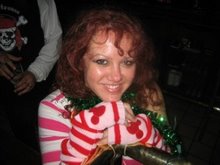Katsina in Hopi Life
Exhibition shares the Hopi perspective on the cultural role of Katsina spirits
Drawn from the Southwest Museum of the American Indian Collection
June 29, 2012–June 23, 2013
The Autry National Center presents a new exhibition that continues the work of highlighting stories through the Native voice. Katsina in Hopi Life is a collaboration of over six years with Hopi cultural bearers and exhibition curators Susan Secakuku and the late Hartman Lomawaima. Drawn from over 700 Katsina dolls in the Southwest Museum of the American Indian Collection, considered one of the nation’s finest collections of its kind, the exhibition will share with the public the meaning and purpose of these spiritual messengers.
“The Autry is pleased to bring the Katsina exhibition to the general public using the expertise of our Hopi curators, who have spent countless hours with our Southwest Museum Collection,” said Daniel Finley, Autry President and CEO. “This is the first time our collection has been used for a comprehensive Katsina exhibition and we look forward to sharing these wonderful dolls with everyone.”
The Katsina is one component of an elaborate ceremonial system found within the Hopi culture. Katsinam (pl.) are spiritual beings who represent all aspect of life, and who are therefore are as diverse as life itself. They represent animals, insects, food, and the elements, each having his/her own name, function, purpose, and dress. They visit the Hopi people during six months of the year, with the intent of bringing moisture to aid crops, blessings for a better life, medicine, gifts of food and produce, and sometimes disciplinary actions. The Hopi people in turn make prayer requests to them for an abundant harvest, increased rain or snow, or even personal wishes for pregnancy, marriage, or a successful hunt. At certain times of the year, Katsina spirits make and give Hopi girls likenesses of themselves (a Katsina doll is called a tihu). These dolls serve to help the children gain knowledge of the Katsinam’s diversity, names, and functions.
“We, the Hopi people, regard the Katsinam as a positive and integral part of our lives,” said Secakuku. “We view them as friends and understand that they are essential to an abundant life here in this world. Their messages and values continue to direct Hopi lifeways today.”
Over 180 dolls will be on display and cover the seasons from December to July. The exhibition provides cultural context to the farming traditions of the Hopi. Dry farming methods—complete with a cornfield—come to life. The Katsina story begins in the winter solstice when the Katsinam arrive. Several ceremonial events and their meanings are explained. Numerous Hopi voices, both young and old, also help explain the relationship between the Katsinam and Hopi people through storytelling, audio, and video found throughout the exhibition. Ambient sound of the wind and rustling of dry corn will also be embedded. A Hopi house and village plaza will be re-created so that visitors can sit and immerse themselves in family and feasting traditions related to these ceremonies. Spring and summer will feature an outdoor setting to highlight dances and traditional music with instruments unique to the Hopi. The Katsina season ends in mid-summer with the Home Dance, which sends the Katsinam back to their spiritual home where they transform back into clouds.
All Hopi villages follow the same ceremonial calendar, but each village carries out its own ceremonies with subtle variations. This exhibition will explain the arrival of the Katsina spirits as it is known by the people of the Sipaulovi village at Second Mesa on the Hopi Reservation.
This exhibition is sponsored in part by Edison International, The Paloheimo Foundation, KPCC, and Margaret A. Cargill Foundation.
Weekday hours of operation for the Autry National Center’s museum at its Griffith Park location are Tuesday through Friday, 10:00 a.m. to 4:00 p.m. The Autry Store’s weekday hours are Tuesday through Friday, 10:00 a.m. to 4:30 p.m., and the Autry Cafe is open Tuesday through Sunday, 9:00 a.m. to 4:30 p.m. Saturday and Sunday hours for the museum and the store are 11:00 a.m. to 5:00 p.m. The museum, the store, and the cafe are closed on Mondays. The libraries are open to researchers by appointment.
Museum admission is $10 for adults, $6 for students and seniors 60+, $4 for children ages 3–12, and free for Autry members, veterans, and children age 2 and under. Admission is free on the second Tuesday of every month.
Subscribe to:
Post Comments (Atom)





No comments:
Post a Comment